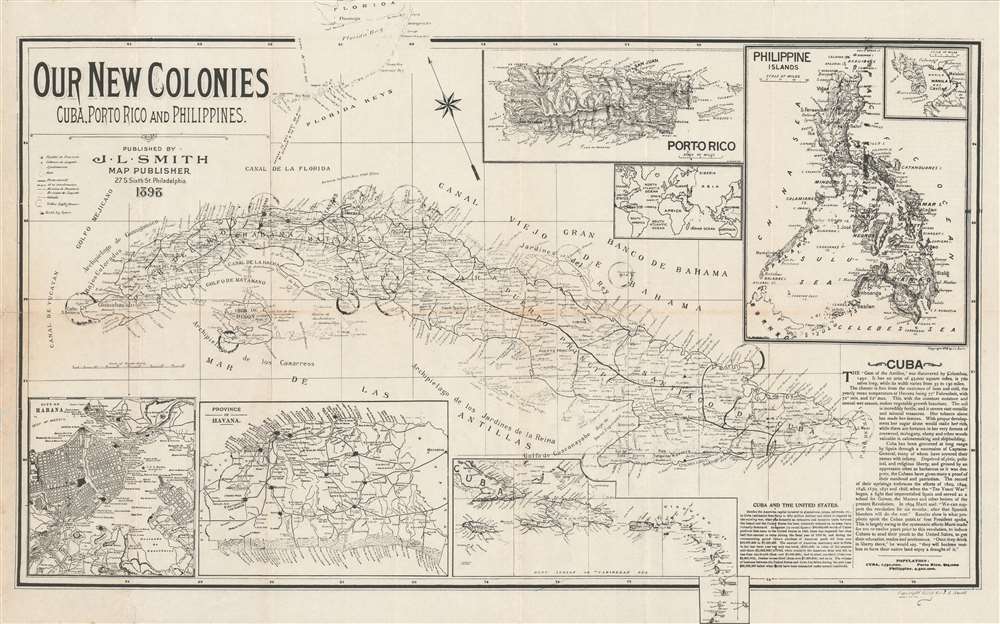This item has been sold, but you can get on the Waitlist to be notified if another example becomes available, or purchase a digital scan.
1898 Smith Map of Cuba, Puerto Rico, and the Philippines
OurNewColonies-smith-1898
Title
1898 (dated) 14.75 x 23.25 in (37.465 x 59.055 cm) 1 : 2400000
Description
An Analysis of the map
With this map, Smith lionizes the territorial gains of the United States as a result of the Spanish-American War to the American people. Smith promotes the positives of these new adventures, particularly with regard to the potential riches awaiting the U.S. in Cuba. A text in the lower right corner highlights Cuba's natural bounty, including its robust production of tobacco and sugar, its unforested wilderness, and its mild, welcoming climate. Smith also cites Cuba's succession of uprisings against corrupt Spanish Captains-General as evidence that the Cubans wanted freedom. Ironically, Cuba becoming a 'colony' of the United States doesn't seem to be granting the Cubans freedom, at least in a modern sense.The United States as a World Power
Although this is not blatantly stated here, Smith also implies the elevation of American stature on the world stage, because the U.S. now has 'colonies' - at the time considered essential for any country to be considered a 'player' on the world stage. With these new colonies, the United States joined European powers from whom the extent of their respective colonial empires was one measure of each power's greatness.Publication History and Census
This map was created and published by John L. Smith in 1898. Two examples are catalogued in the OCLC as being part of the institutional collections at the New York Public Library and the Bibliothèque nationale de France, respectively.Cartographer
John L. Smith (March 19, 1846 - April 1, 1921) was a Philadelphia based stationer, map seller, publisher, and printer active in the late 19th and early 20th centuries. Smith served in the Civil war with Company K, 118th Pennsylvania, the 'Corn Exchange Regiment' from roughly 1862. He served in the Battle of North Anna and Bethesda Church, where he was wounded. He mustered out of service in 1865 and settled in Philadelphia. Smith subsequently worked with Rufus L. Barnes (1794 - 1868), whose business he acquired in 1868. His offices were at 27 South Sixth Street, Philadelphia. He retired from the map business in 1920. Smith rose to prominence and wealth and, when he died, left a large estate of $54,500 USD to charity. He had no children and lived as a bachelor at the Columbia Club, 1600 North Broad Street, until his death of a heart attack in 1921. He had a brother, William C. Smith, who survived him. More by this mapmaker...

